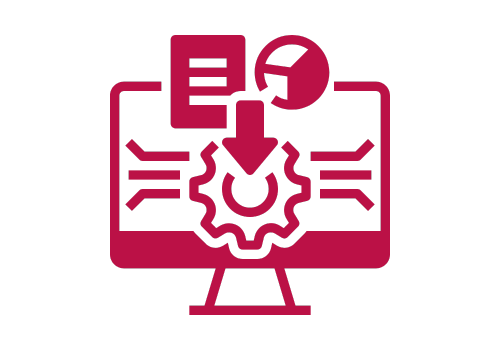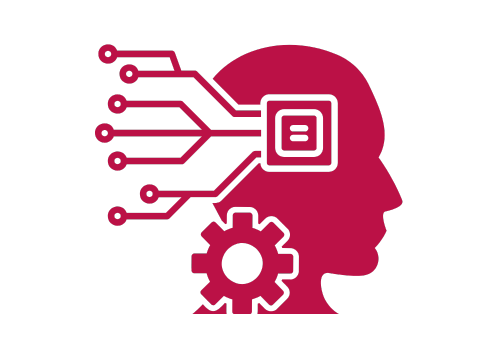Deep Learning with TensorFlow
Unlock the Power of Deep Learning with Google's Premier Framework
Why This Training?
In an age where machine learning is driving innovation, TensorFlow stands out as the leading framework for building powerful and scalable deep learning models. Whether you're seeking to advance your career, innovate in your company, or dive into the future of computational technologies, understanding TensorFlow is invaluable. Our expert-led training demystifies TensorFlow, guiding you from the basics to advanced functionalities.
Duration: 9 Hours (online / virtual live session)

Who Should Attend?
ML enthusiasts looking to delve into deep learning.
Software developers aiming to integrate machine learning capabilities into applications.
Software developers aiming to integrate machine learning capabilities into applications.
See more
Data scientists wishing to upgrade their model-building toolkit.
Anyone passionate about deep learning and its transformative power.
Anyone passionate about deep learning and its transformative power.

Course Highlights
Comprehensive overview of TensorFlow and Deep Learning.
Hands-on sessions on building Neural Networks, CNNs, and RNNs.
Dive into TensorFlow with Keras for streamlined model development.
Hands-on sessions on building Neural Networks, CNNs, and RNNs.
Dive into TensorFlow with Keras for streamlined model development.
See more
Master data handling, regularization techniques, and model evaluation in TensorFlow.
Insights into Transfer Learning and leveraging TensorFlow Hub.
Guidance on model deployment using TensorFlow Serving.
Insights into Transfer Learning and leveraging TensorFlow Hub.
Guidance on model deployment using TensorFlow Serving.

Pre-requisites:
Basic understanding of Python programming.
Familiarity with fundamental concepts of machine learning (not mandatory, but helpful).
Familiarity with fundamental concepts of machine learning (not mandatory, but helpful).
Materials Required by Participants
A laptop or computer with at least 8GB RAM.
Stable internet connection for virtual sessions (if applicable).
Latest version of TensorFlow installed (installation guidance will be provided before training).
A Python environment (preferably Anaconda) with Jupyter Notebook installed.
Course materials and datasets, which will be shared before the training sessions.
Write your awesome label here.
Training Content
Introduction to TensorFlow
Objective: Equip participants with foundational knowledge of TensorFlow, its architecture, and applications in building machine learning models.
1. TensorFlow Fundamentals (3 hours)
Objective: Understand the basics and significance of TensorFlow in the deep learning ecosystem.
1.1. Introduction to Deep Learning & TensorFlow:
- What is Deep Learning?
- Why TensorFlow? Its place in the ML/DL framework landscape.
- Overview of TensorFlow's ecosystem and components.
1.2. TensorFlow Core Concepts:
- Understanding Tensors: Rank, Shape, and Type.
- Computational Graphs and Sessions.
- Basic operations with Tensors.
1.3. Installing TensorFlow:
- Prerequisites & Setup.
- Validating the installation with a basic program.
1.4. Building a Simple Neural Network with TensorFlow:
- Understanding neural networks: Neurons, Layers, and Activation Functions.
- Implementing a basic neural network for a simple regression problem.
2. Diving Deeper into TensorFlow (3 hours)
Objective: Dive into the intricacies of TensorFlow and model development.
2.1. Keras & TensorFlow:
- Introduction to Keras.
- Benefits of using Keras with TensorFlow.
- Building models using the Keras Sequential API.
2.2. Training and Evaluating Models:
- Understanding loss functions and optimizers.
- Backpropagation and Gradient Descent.
- Evaluating model accuracy and loss.
2.3. Data Handling with TensorFlow:
- TensorFlow Datasets: Loading and preprocessing data.
- Image data handling with tf.data.
2.4. Regularization & Overfitting:
- The challenge of overfitting in deep learning.
- Techniques like Dropout and Batch Normalization.
3. Advanced TensorFlow and Applications (3 hours)
Objective: Explore advanced TensorFlow functionalities and real-world applications.
3.1. Convolutional Neural Networks (CNNs) with TensorFlow:
3.1. Convolutional Neural Networks (CNNs) with TensorFlow:
- Understanding CNNs: Filters, Pooling, and Flattening.
- Implementing a basic CNN for image classification.
3.2. Recurrent Neural Networks (RNNs) and LSTM:
- Basics of RNNs and their applications.
- Long Short-Term Memory (LSTM) and its significance.
3.3. TensorFlow Hub & Transfer Learning:
- Leveraging pre-trained models.
- Fine-tuning for specific tasks.
3.4. TensorFlow Serving & Deployment:
- Saving and loading models.
- Serving models using TensorFlow Serving.
3.5. Conclusion & Forward Path:
- Resources for further learning.
- Future trends in TensorFlow and deep learning.
WOMEN AI ACADEMY
Women AI Academy is a gender-equality and technology driven learning & development organization
Site Terms & Info
ETHOS AI Training & Consulting GmbH
Weihenstephanerstr.1281673
Munich-Germany
We are driven by the vision of making AI both ethical and accessible to everyone
Copyright © 2024 Brought to you by Ethos ai AI Training & Consultancy GmbH
Ali Hessami is currently the Director of R&D and Innovation at Vega Systems, London, UK. He has an extensive track record in systems assurance and safety, security, sustainability, knowledge assessment/management methodologies. He has a background in the design and development of advanced control systems for business and safety-critical industrial applications.
Hessami represents the UK on the European Committee for Electrotechnical Standardization (CENELEC) & International Electrotechnical Commission (IEC) – safety systems, hardware & software standards committees. He was appointed by CENELEC as convener of several Working Groups for review of EN50128 Safety-Critical Software Standard and update and restructuring of the software, hardware, and system safety standards in CENELEC.
Ali is also a member of Cyber Security Standardisation SGA16, SG24, and WG26 Groups and started and chairs the IEEE Special Interest Group in Humanitarian Technologies and the Systems Council Chapters in the UK and Ireland Section. In 2017 Ali joined the IEEE Standards Association (SA), initially as a committee member for the new landmark IEEE 7000 standard focused on “Addressing Ethical Concerns in System Design.” He was subsequently appointed as the Technical Editor and later the Chair of P7000 working group. In November 2018, he was appointed as the VC and Process Architect of the IEEE’s global Ethics Certification Programme for Autonomous & Intelligent Systems (ECPAIS).
Trish advises and trains organisations internationally on Responsible AI (AI/data ethics, policy, governance), and Corporate Digital Responsibility.
Patricia has 20 years’ experience as a lawyer in data, technology and regulatory/government affairs and is a registered Solicitor in England and Wales, and the Republic of Ireland. She has authored and edited several works on law and regulation, policy, ethics, and AI.
She is an expert advisor on the Ethics Committee to the UK’s Digital Catapult Machine Intelligence Garage working with AI startups, is a Maestro (a title only given to 3 people in the world) and expert advisor “Maestro” on the IEEE’s CertifAIEd (previously known as ECPAIS) ethical certification panel, sits on IEEE’s P7003 (algorithmic bias)/P2247.4 (adaptive instructional systems)/P7010.1 (AI and ESG/UN SDGS) standards programmes, is a ForHumanity Fellow working on Independent Audit of AI Systems, is Chair of the Society for Computers and Law, and is a non-exec director on the Board of iTechlaw and on the Board of Women Leading in AI. Until 2021, Patricia was on the RSA’s online harms advisory panel, whose work contributed to the UK’s Online Safety Bill.
Trish is also a linguist and speaks fluently English, French, and German.
In 2021, Patricia was listed on the 100 Brilliant Women in AI Ethics™ and named on Computer Weekly’s longlist as one of the Most Influential Women in UK Technology in 2021.

